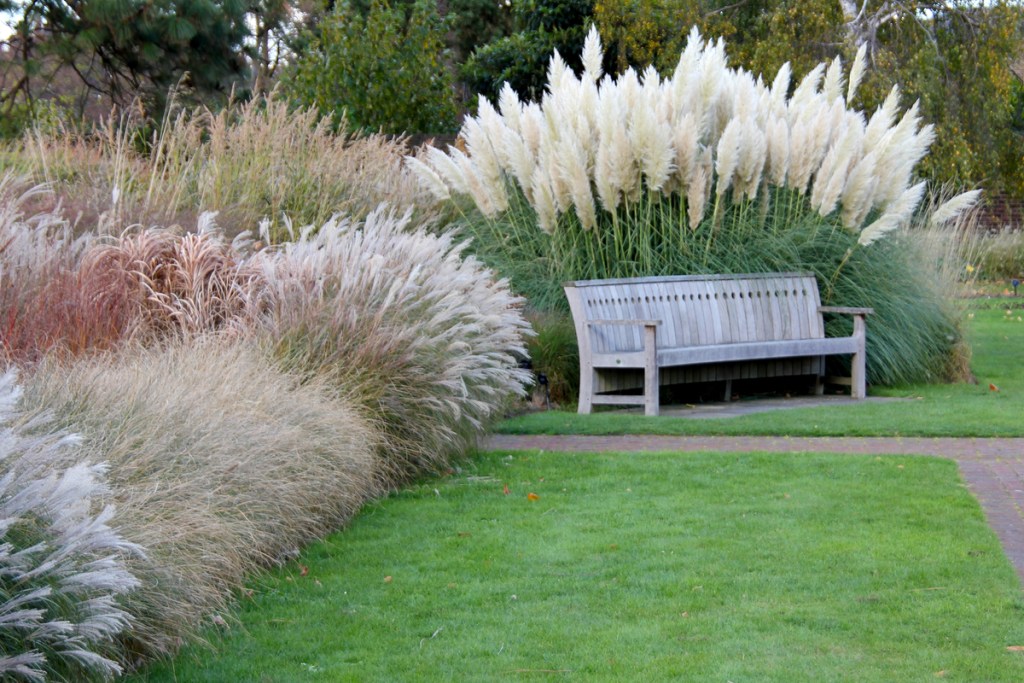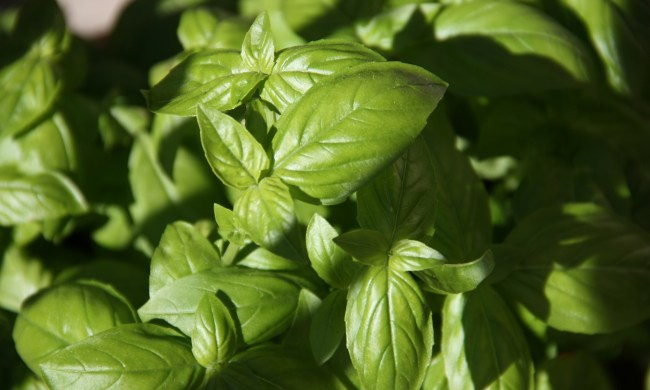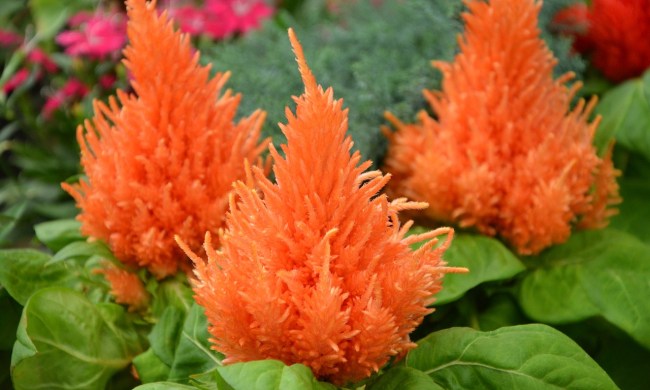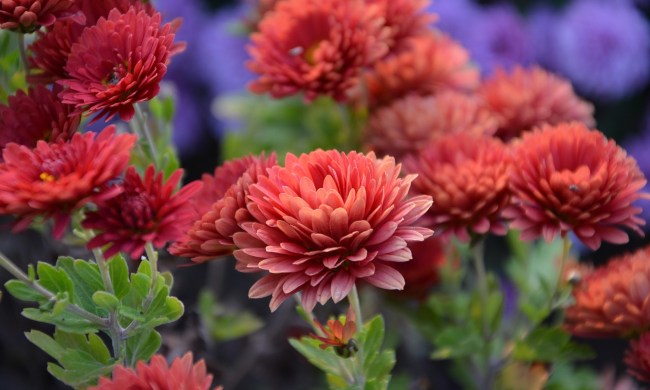Although there are countless varieties of grass, so many of them look the same. It can be difficult to find grass that really stands out in your garden. That’s where ornamental grasses come in. Ornamental grasses like pink muhly grass, purple fountain grass, and switchgrass can add color and texture to your garden borders just like flowers would. Wondering which ornamental grass to choose for your garden? Here are a few of our favorites!
What makes a grass ornamental?
You may think that all grass is ornamental. After all, we grow lawns because they look nice, not because we use them for food. You wouldn’t be entirely wrong in thinking that. Ornamental grass is still grass; it’s just grass that looks different. However, ornamental grass includes grass-like plants such as sedge, as well as true grass varieties.
Ornamental grasses come in a range of appearances besides the short, green look of classic lawn grasses. Often, ornamental grasses are tall, with some growing to 15 feet tall or more. Many are colorful and patterned, and they may have an interesting flower or seed head. Since there are so many varieties, there are ornamental grasses that will fit almost any garden or yard. Many gardeners use ornamental grasses as borders, but some varieties can make great additions to container gardens or flower gardens.
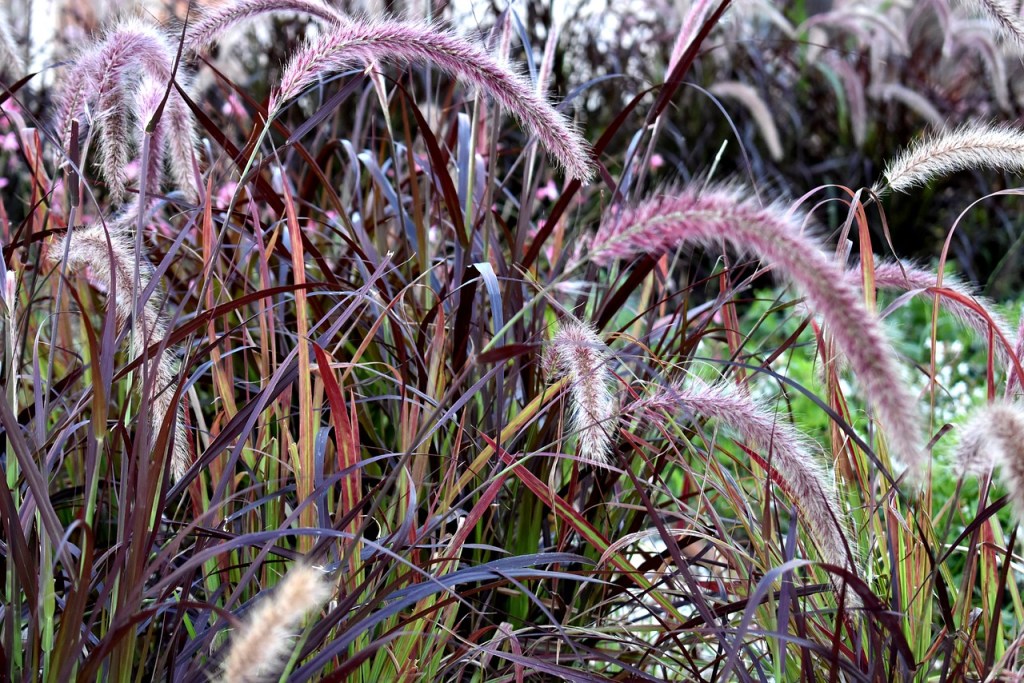
Purple fountain grass
This ornamental grass is a favorite of many gardeners, with its lovely dark purple or burgundy leaves and tall, feathery flowers. Purple fountain grass is a tender perennial, meaning it’s a perennial in mild climates and an annual in colder ones.
If you live in a colder climate but still want to grow purple fountain grass, you may be able to keep it alive through winter if you protect it from the cold, whether with mulch and windbreaks or by growing it in a container. Purple fountain grass doesn’t require much attention. A sunny spot with some well-draining soil and plenty of room to grow is all this grass needs. It can grow up to 4 feet tall and wide, so be sure to space your plants out.

Pink muhly grass
Pink muhly grass is a low-maintenance grass perfect for gardens with a softer or more whimsical aesthetic. It loves full sun and partial shade, is nontoxic to animals but rarely bothered by pests, and has a long life span. Pink muhly grass is tolerant of heat, drought, and salt, making it particularly popular with coastal gardeners.
Its slightly smaller size compared to other ornamental grasses makes it a good fit for more compact gardens. Pink muhly grass gets its name from the fluffy pink seed heads it produces in late summer and fall.
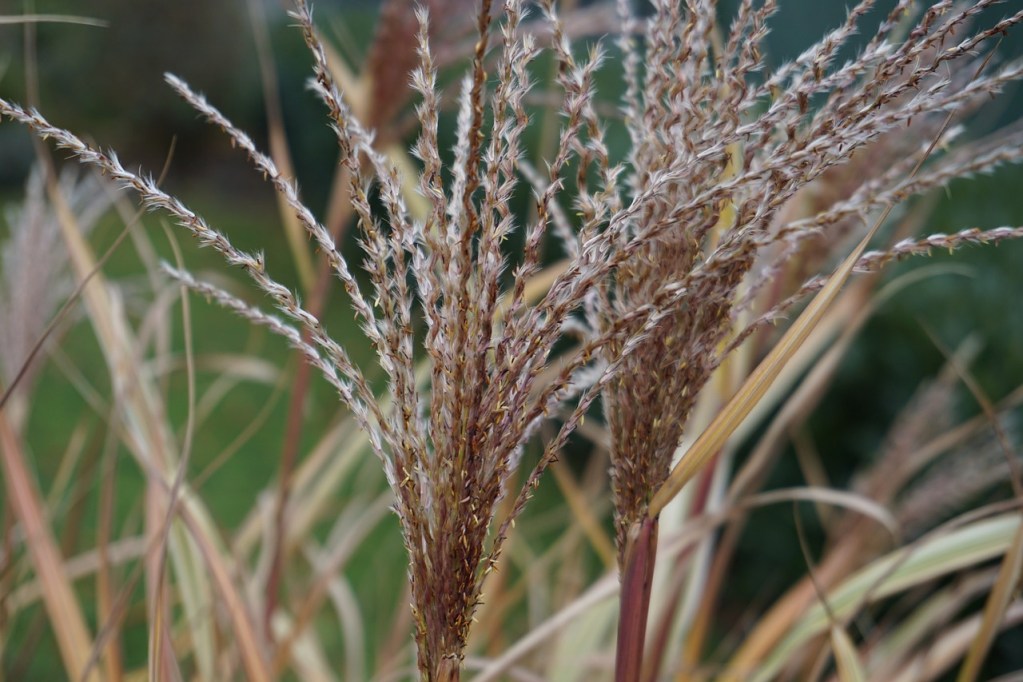
Little bluestem
Little bluestem is a native grass of the American prairies and requires shockingly little care. During spring, it lives up to its name; its foliage is a lovely shade of blue with hints of green and occasionally purple. In fall, the grass turns bronze before fading to tan in winter.
This grass blooms in the late summer by growing tall flower stalks with small blue or purple flowers that become tiny, fluffy, white seed heads. It is tolerant of most conditions and soil types, mostly due to its strong, extra long roots. The only conditions that cause little bluestem any problems are excessive shade and standing water.
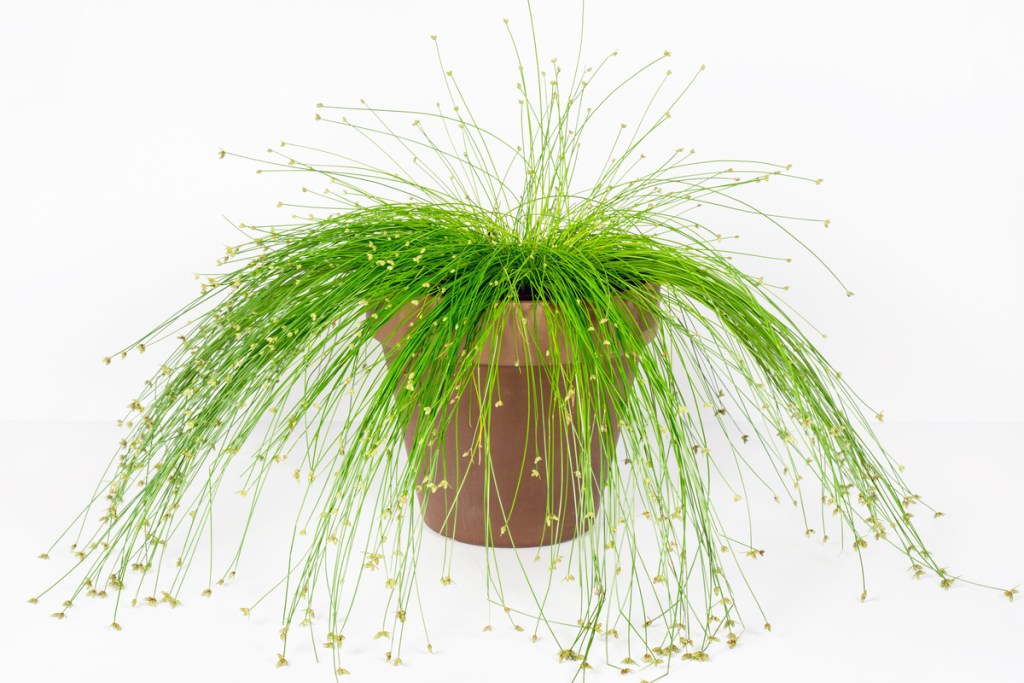
Fiber optic grass
Although it’s referred to as an ornamental grass, fiber optic grass is actually a type of sedge. One glance at this grass and you’ll understand where its name comes from. It has thin, bright green leaves that end in silver or white flowers. This ornamental grass makes an excellent container plant or centerpiece due to its shape and color.
Fiber optic grass enjoys moist areas, making it ideal for parts of your garden that may be too wet for other plants. However, it’s toxic to people and pets and can be a skin irritant, so take care when handling it.
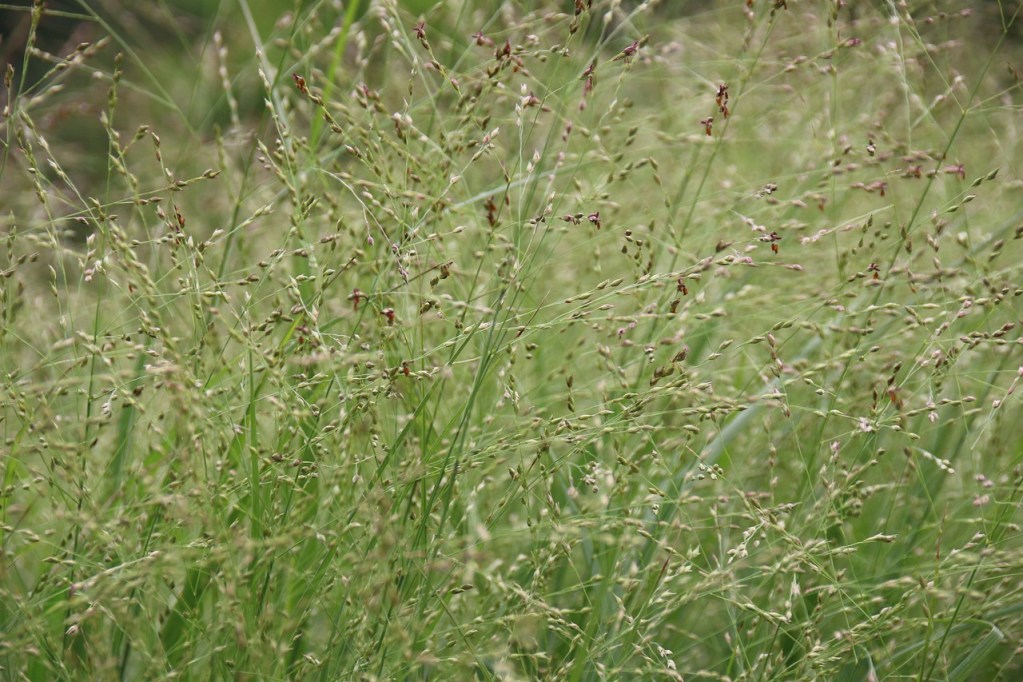
Switchgrass
Switchgrass is a native prairie grass that grows in tall columns, which makes it perfect for garden borders, particularly at corners or along back borders. Beginning in midsummer, it produces tiny orange or pink flowers at the end of its panicles. This creates a cloud of color at the top of each column that lasts through the summer and into the fall when the plant turns a bronze-gold color.
Although it is attractive to many types of wildlife and insects, it rarely has significant problems with pest damage. Switchgrass is tolerant of both heat and drought, making it a perfect companion plant for other drought-tolerant perennials like lavender.
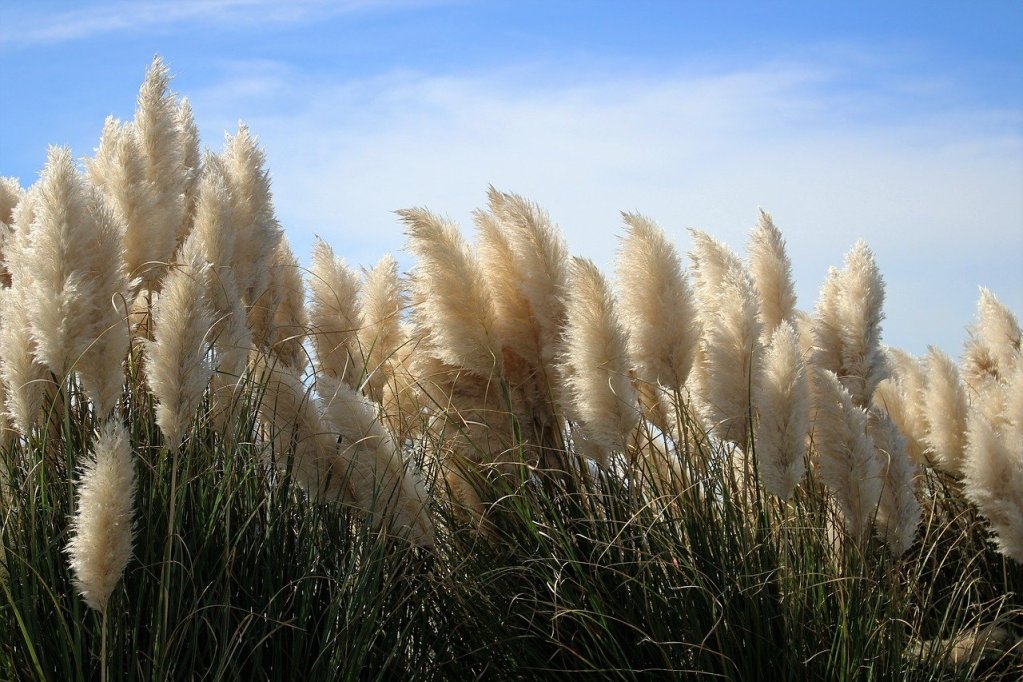
Dwarf pampas grass
Both dwarf pampas grass and the full-sized varieties would make stunning additions to any garden, but the dwarf version is a better option for borders and accents. This grass has long, whip-thin leaves and tall stalks ending in incredibly fluffy white flowers.
It requires full sun but is a fairly drought-tolerant grass. Additionally, you don’t need to worry about deer or rabbits snacking on your pampas grass. Dwarf pampas grass can grow to between 5 and 6 feet tall, so be sure to give them plenty of room.
These six ornamental grasses are some of our favorites. Any one of them would be a great choice to accent your garden and provide you with color and texture all year long. No matter which variety you choose, ornamental grass is a stunning addition to your yard or garden.
